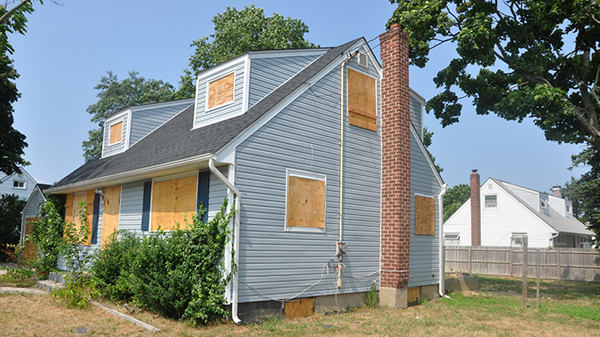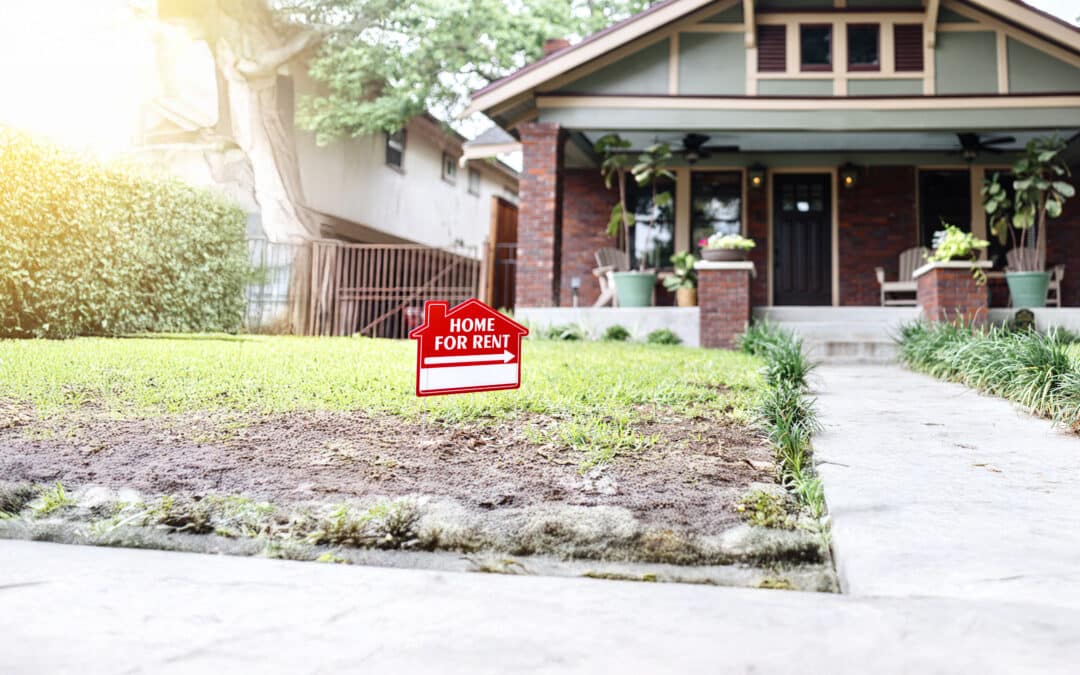ATTOM Data Solutions released its Q3 2017 U.S. Home Sales Report shows that distressed home sales — including bank-owned (REO) sales, third-party foreclosure auction sales, and short sales which accounted for 12.5 percent of all home sales in Q3 2017, down from 13.5 percent in the previous quarter and down from 14.1 percent in Q3 2016 to the lowest level since Q3 2007.
“Distressed sales nationally are now the exception rather than the rule, and we would expect the distressed sale share to return to the pre-recession norm of single-digit percentages within the next year given the current downward trajectory,” said Daren Blomquist, senior vice president at ATTOM Data Solutions. “Distressed sales have become more localized in nature, with some of the biggest increases from a year ago in markets experiencing regional economic weakness or a natural disaster event that has triggered a jump in foreclosure activity.”
Distressed Sales Share Increases
Among 146 metropolitan statistical areas with a population of at least 200,000 and at least 100 distressed sales during the quarter, those with the highest share of distressed sales were Atlantic City, New Jersey (35.2 percent); McAllen-Edinburg, Texas (24.5 percent); Montgomery, Alabama (23.7 percent); Akron, Ohio (23.2 percent); and Youngstown, Ohio (22.5 percent).
Metros with the smallest share of distressed sales in Q3 2017 were San Jose, California (3.1 percent); Salt Lake City, Utah (3.3 percent); Austin, Texas (4.1 percent); San Francisco, California (5.2 percent); and Provo-Orem, Utah (5.5 percent).
Counter to the national trend, 29 of the 146 metros analyzed for distressed sales (20 percent) posted a year-over-year increase in the share of distressed sales, led by Corpus Christi, Texas (up 33 percent); Indianapolis, Indiana (up 30 percent); Cedar Rapids, Iowa (up 29 percent); Baton Rouge, Louisiana (up 25 percent); Provo, Utah (up 22 percent); and Oklahoma City, Oklahoma (up 22 percent).
Major metros with an increase in the share of distressed sales compared to a year ago included New York, New York (up 6 percent); Dallas, Texas (up 13 percent); Houston, Texas (up 7 percent); Philadelphia, Pennsylvania (up 1 percent); and Phoenix, Arizona (up 6 percent).
Median Sales Prices Exceed Pre-Recession Peaks in 66 Percent of Local Markets
The median sales price nationwide in the third quarter was $248,000, up 10 percent from a year ago to a new all-time high — 3 percent above the pre-recession high of $241,900 in Q3 2005. It was the second consecutive quarter where median home prices nationwide were above the pre-recession peak.
Median home prices increased to new all-time highs in 55 of 126 metro areas analyzed for home price appreciation in the report (44 percent), including Los Angeles, Dallas, Atlanta, Detroit, and Seattle. Prices have exceeded pre-recession peaks since the end of the recession in 83 of the 126 metro areas (66 percent).
Mid home prices are still below pre-recession peaks in 43 of 126 metropolitan areas analyzed for home price appreciation in the report (34 percent), including New York (6 percent below); Chicago (10 percent below); Philadelphia (2 percent below); and Washington, D.C. (3 percent below).
Markets with median home prices in Q3 2017 still furthest below the pre-recession peak were York, Pennsylvania (60 percent below); Naples, Florida (24 percent below); Modesto, California (21 percent below); Bridgeport, Connecticut (20 percent below); Mobile, Alabama (19 percent below); and Las Vegas, Nevada (19 percent below).

Click on graph for larger image. Graph will open in separate tab.
Biggest Home Price Increases
Among the 126 metropolitan statistical areas analyzed in the report, those with the biggest year-over-year increase in median home prices were Ann Arbor, Michigan (up 16 percent); Ocala, Florida (up 16 percent); Salt Lake City, Utah (up 14 percent); San Jose, California (up 14 percent); St. Louis, Missouri (up 14 percent);
Other markets in the top 10 for biggest home price increases were Reno, Nevada (up 13 percent); Seattle, Washington (up 13 percent); Las Vegas, Nevada (up 13 percent); Greeley, Colorado (up 12 percent); and Salem, Oregon (up 12 percent).
Biggest Home Seller Profits
Home sellers in Q3 2017 sold for $58,000 more than their original purchase price on average, a percent gain of 31 percent above original purchase price on average — the highest average dollar gain and percent gain since Q2 2007.
Among 128 metropolitan statistical areas with at least 200,000 people and sufficient historical home sales and price data, those with the highest average percent gain for home sellers in Q3 2017 were San Jose, California (80 percent); San Francisco, California (71 percent); Seattle, Washington (65 percent); Austin, Texas (59 percent); Portland, Oregon (58 percent).
Counter to the national trend, 32 of the 128 metropolitan statistical areas (25 percent) analyzed for home seller gains posted a quarter-over-quarter decrease in average percent gains, including San Francisco, California, Santa Rosa, California, Modesto, California, Denver, Colorado, and Boulder, Colorado.
Average Homeownership Tenure Increases to New Record High in Third Quarter
U.S. homeowners who sold in the third quarter had owned an average of 8.19 years, up from an average of 7.97 years for homes sold in the previous quarter and up from 7.77 years for homes sold in Q3 2016 to a new record high as far back as ATTOM has data available, to Q1 2000.
Among 99 metropolitan statistical areas with a population of at least 200,000 and sufficient historical data, those with the longest average homeownership tenure for homes sold in Q3 2017 were Springfield, Massachusetts (12.48 years); Worcester, Massachusetts (12.41 years); New Haven, Connecticut (12.35 years); Boston, Massachusetts (12.25 years); and Bridgeport, Connecticut (12.24 years).
“The marked increase in the length of time that Seattle homeowners are staying in their homes is notable — in 2000, the average home ownership tenure was 5.5 years and today it is more than a decade,” said Matthew Gardner, chief economist at Windermere Real Estate, covering the Seattle market, where the average homeownership tenure of 10.16 years in the third quarter was the 18th longest in the country and a new record high for Seattle. “This would help explain, to a degree, why we are experiencing such a lack of inventory in the Seattle market. I wouldn’t be surprised if we saw this number rise further as homeowners choose to stay in their homes and remodel rather than actively compete for a new home.”
Shortest Homeownership Tenure
Metro areas with the shortest average homeownership tenure were Oklahoma City, Oklahoma (6.52 years); Detroit, Michigan (7.08 years); Austin, Texas (7.11 years); Denver, Colorado (7.20 years); and Tulsa, Oklahoma (7.23 years).
Counter to the national trend, the average homeownership tenure decreased from a year ago in 19 of the metro areas analyzed, including Portland, Oregon (down 1 percent); Cincinnati, Ohio (down 1 percent); Salt Lake City, Utah (down 1 percent); Honolulu, Hawaii (down 2 percent); and Dayton, Ohio (down 1 percent).
Cash Sales Share Increases
All-cash buyers accounted for 27.2 percent of single-family home and condo sales in the third quarter, down from 28.2 percent in the previous quarter but up from 26.7 percent in Q3 2016 —the second consecutive quarter with a year-over-year increase following 15 consecutive quarters of year-over-year decreases.
“Across Southern California, home price appreciation, and low listing inventory are contributing factors demonstrating a pent-up demand for home buyers wishing to take advantage of the benefits associated with homeownership,” said Michael Mahon, president at First Team Real Estate covering the Southern California market. With cash transactions accounting for nearly one out of five closed escrow transactions within our market, it is clear consumers continue to leverage all cash offers as a method of offer differentiation, in attempts of purchasing a home. ”
Highest Share of All-Cash Sales
Among 132 metropolitan statistical areas with a population of at least 200,000 and at least 1,000 single family home and condo sales in Q3 2017, those with the highest share of all-cash sales during the quarter were Mobile, Alabama (53.8 percent); Tucson, Arizona (50.4 percent); Scranton, Pennsylvania (49.1 percent); Grand Rapids, Michigan (48.5 percent); and Palm Bay-Melbourne-Titusville, Florida (46.6 percent).
Seventy-six of the 132 metro areas analyzed for cash sales (58 percent) posted a year-over-year increase in share of cash sales, led by Grand Rapids, Michigan (up 110 percent); Tucson, Arizona (up 88 percent); Albany, New York (up 87 percent); Modesto, California (up 55 percent); and Chattanooga, Tennessee (up 49 percent).
Where Institutional Investor Purchases are Up
The share of U.S. single-family home and condo sales sold to institutional investors (entities buying at least 10 properties in a calendar year) represented 2.7 percent of all single-family home and condo sales in the third quarter, up from 2.1 percent in the previous quarter but still down from 2.9 percent in Q3 2016 — the fourth consecutive quarter with a year-over-year decrease.
Among 132 metropolitan statistical areas with a population of at least 200,000 and at least 1,000 single family home and condo sales in Q3 2017, those with the highest share of institutional investor purchases during the quarter were Memphis, Tennessee (9.3 percent); Birmingham, Alabama (8.3 percent); Clarksville, Tennessee (6.9 percent); Charlotte, North Carolina (6.6 percent); and Killeen, Texas (6.1 percent).
Counter to the national trend, 39 of the 132 metro areas analyzed (30 percent) posted a year-over-year increase in share of institutional investor purchases, including Clarksville, Tennessee (up 48 percent); Charlotte, North Carolina (up 19 percent); Jacksonville, Florida (up 5 percent); Nashville, Tennessee (up 28 percent); and Omaha, Nebraska (up 6 percent).
FHA Buyer Share Drops to Lowest Level In 10 Quarters
Sales to FHA buyers (typically first-time homebuyers or other buyers with a low-down payment) represented 13.5 percent of all single-family home and condo sales in the third quarter, down from 14.2 percent in the previous quarter and down from 15.6 percent in Q3 2016 to the lowest level since Q1 2015.
Among 132 metropolitan statistical areas with a population of at least 200,000 and at least 1,000 homes in Q3 2017, those with the highest share of FHA sales were Ogden, Utah (30.9 percent); El Paso, Texas (29.8 percent); Indianapolis, Indiana (25.9 percent); Salt Lake City, Utah (23.3 percent); and York, Pennsylvania (23.2 percent).
Metros with the lowest share of FHA sales in Q3 2017 were Honolulu, Hawaii (2.0 percent); Boulder, Colorado (2.7 percent); Madison, Wisconsin (2.8 percent); San Jose, California (3.2 percent); and Asheville, North Carolina (3.9 percent).

Click on graph for larger image. Graph will open in separate tab.
Report methodology
The ATTOM Data Solutions U.S. Home Sales Report provides percentages of distressed sales and all sales that are sold to investors, institutional investors and cash buyers, a state and metropolitan statistical area. This data is also available at the county and ZIP code level upon request. The data is derived from recorded sales deeds, foreclosure filings and loan data. Statistics for previous quarters are revised when each new report is issued as more deed data becomes available.
Definitions
All-cash purchase: sale where no loan is recorded at the time of sale and where ATTOM has coverage of loan data.
Homeownership tenure: for a given market and given quarter, the average time between the most recent sale date and the previous sale date, expressed in years.
Home seller price gains: the difference between the median sales price of homes in a given market in a given quarter and the median sales price of the previous sale of those same homes, expressed both in a dollar amount and as a percentage of the previous median sales price.
Institutional investor purchases: residential property sales to non-lending entities that purchased at least 10 properties in a calendar year.
REO sale: a sale of a property that occurs while the property is actively bank owned (REO).
Short sale: a sale of a property where the sale price is less than (short) the combined amount of loans secured by the property.
Third-party foreclosure auction sale: a sale of a property that occurs at the public foreclosure auction (trustee’s sale or sheriff’s sale) in which the property is sold to a third-party buyer and does not transfer back to the foreclosing bank.
























0 Comments